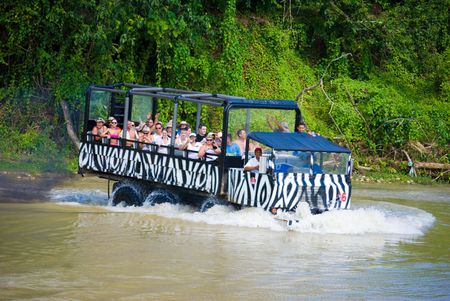The Caribbean island of the Dominican Republic is the perfect place for an enjoyable holiday. The island has been a centre for tourism since 1492 when Christopher Columbus and his crew became the first non-indigenous people to set foot on the island.
History of Dominican Republic
Hispaniola
When Columbus arrived, he named the island Hispaniola in honour of his Spanish patrons. The local people at the time, the Taínos, who had been living peacefully on the island since around 800 AD, were wiped out within fifty years by diseases brought by the Europeans, not to mention their brutal methods of colonisation. The capital city was called Santo Domingo and became the first European owned city outside of Europe itself.
The main sources of income for the island were gold and sugar. Before long though, the gold ran out and the settlers moved on. The island was then over-run by French pirates. In 1795, the Spanish ceded the island to France, then following a period of invasion by Haiti, the locals established the independent country of the Dominican Republic in 1844.
Getting there
Most visitors to the Dominican Republic require a visa which can be obtained from the consulate in London or at the airport upon arrival. It is valid for 30 days. Anyone wishing to stay longer must apply for an extension. There are regular flights from the major UK airports to the Dominican Republic.
Tourism in the Dominican Republic
What to see and do
Most people who go on Dominican Republic holidays are looking to enjoy the 300 kilometres of beautiful sandy beaches. The main tourist area is on the north side of the island between Puerto Plata and Cabarete, where most of the holiday resorts are sited. The capital, at the southern end of the island, is also a popular tourist spot with its cathedral and other historical sights. The culture of the indigenous people can still be seen with traditional arts and crafts available for purchase.
Flora, fauna and forests
The Dominican Republic has several national parks and areas of scientific interest. The mountains in the centre of the island are covered with forests which contain a wealth of floral gems including 67 types of orchid. Sadly, much of the original forest was destroyed at the time of colonisation but an extensive preservation programme has seen the island's natural glory restored. The island is home to several types of reptiles including crocodiles and various species of iguana. Tourists can also watch humpback whales and manatees.
Last word
Christopher Columbus may have been the first tourist, but there is still plenty for modern day tourists to enjoy. Visit the official tourism website for more information.




